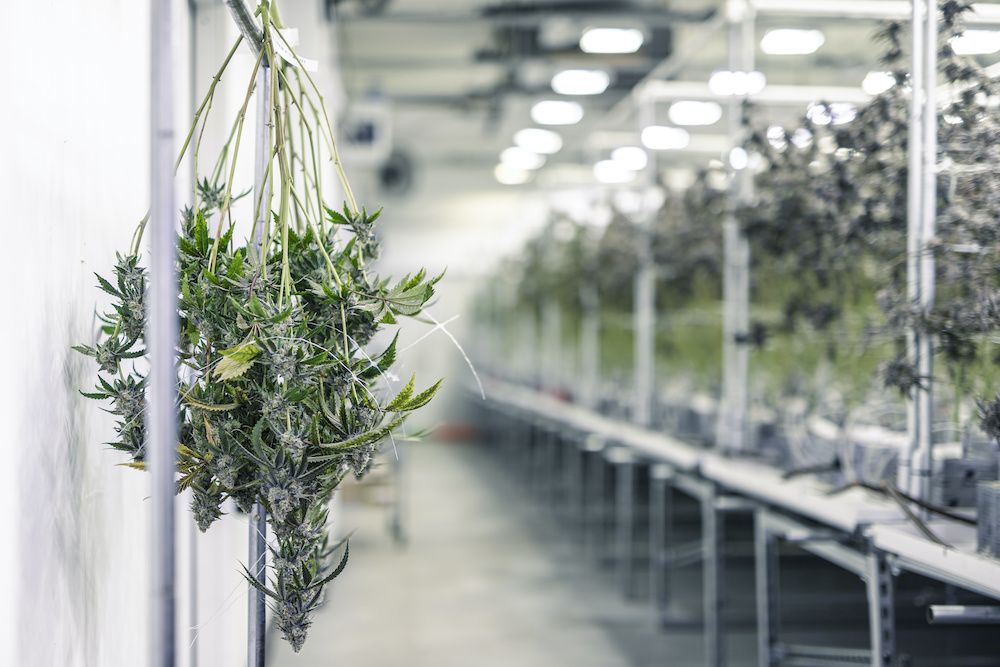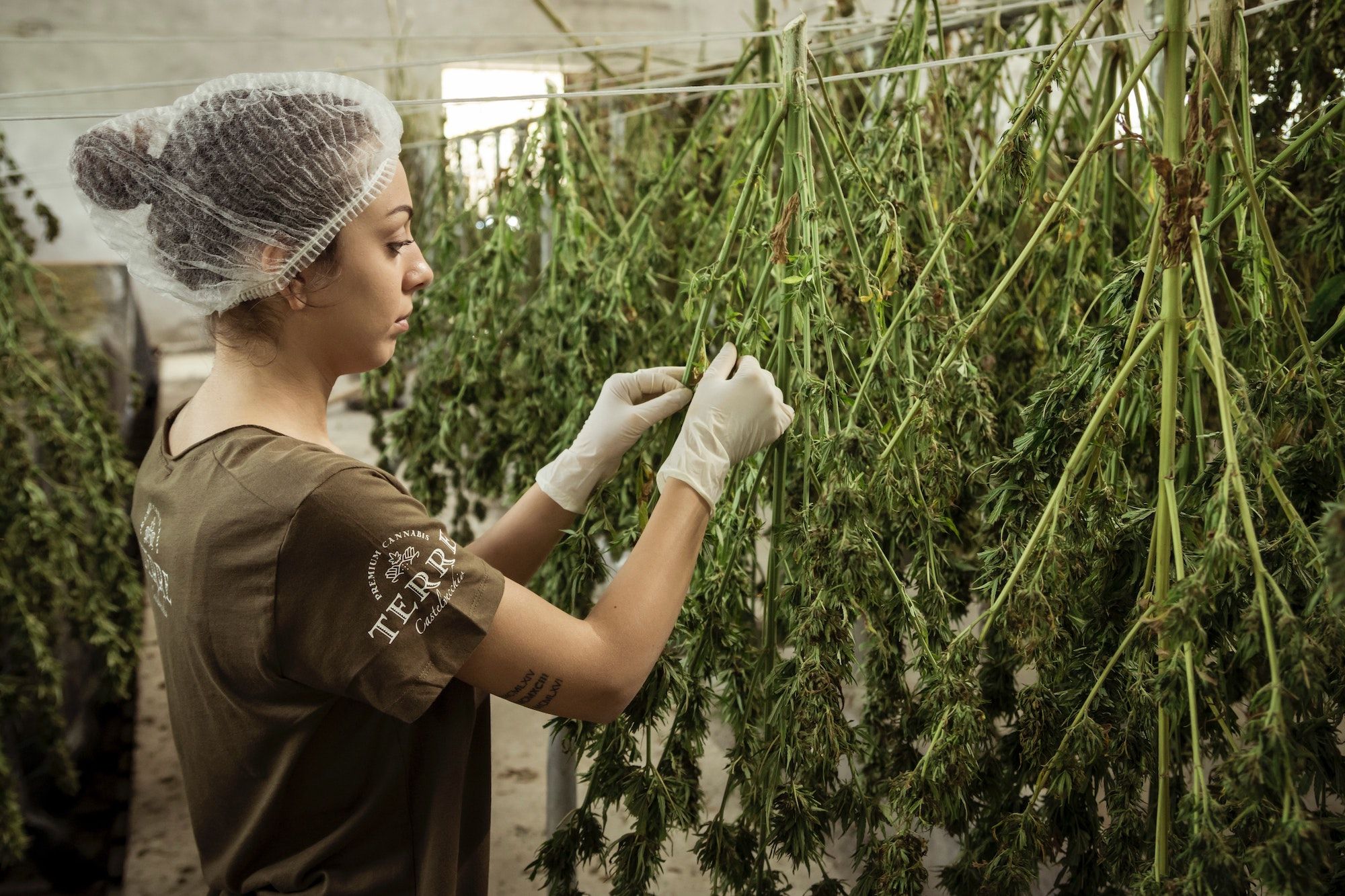The Cannabis Curing Process: What is it, and How Important Is It?
In this article, we cover a brief generalized history of curing, the importance of curing cannabis, and how curing (or not doing so) impacts our flower.

In this article, we cover a brief generalized history of curing, the importance of curing cannabis, and how curing (or not doing so) impacts our flower.
The History of Curing
People have been curing things for as long as civilization has existed. Curing food is one of the most important aspects of human evolution. Centuries before refrigeration was invented, people needed to cure food to store and preserve it. Thus, ancient people discovered the curing process in food, which involves adding components like salt or sugar. Curing food is one of the main reasons ancient people were able to build civilization as we know it and move away from hunter-gatherer tribes.
There are several different methods when it comes to curing and storing food long-term, but the main goal is to remove bacteria and moisture while preserving precious nutrients and flavors. This way, harvesting crops or hunting animals for meat meant that food could be stored long-term. Before curing was discovered, it was necessary to be on the prowl or to forage for the next meal. When it comes to curing harvested and dried cannabis, it takes little else than time, patience, and typically some nice glass containers.
The Importance of Curing Cannabis Flower
There are many aspects included in the process of producing the highest quality cannabis possible. It involves selecting the best seeds with premium genetics, deciding on your grow medium and lighting, as well as trimming and pruning, fertilization, watering, and then harvesting. The final step in the process of producing cannabis flower is curing. Curing helps to retain the nutrients and caloric content for the consumption of food, and curing cannabis preserves cannabinoids.
The very minute you harvest the cannabis crop, it begins the process of breaking down from enzymes and starches. By curing cannabis flower, the process is slowed because the plant absorbs these components before drying out inside of the plant. Detecting cannabis that has not been properly cured is relatively easy - extensive starches and sugars that have not been cured out will cause flower to be harsh and much less flavorful. Anyone who has consumed “brick weed” knows exactly what we are talking about here.
In addition to the smoothness of properly cured cannabis flower, the curing process will also help preserve the potency and the terpene profile of the individual cultivar being grown. Curing might impact specific terpenes differently - more on this fascinating topic later in this article. As recently harvested cannabis flower is maintained at the right temperature and humidity, cannabinoids transform into THCa, which will eventually become the most popular cannabinoid, which is psychoactive THC.
Drying Your Buds Before Curing
Many newbies are tempted to break buds off of the stem and consume immediately. This is understandable, as it takes a lot of love and care to grow quality cannabis at home. Trust us, you will be glad you were patient and waited to cure your flower - it makes all the difference in the end.
Before you start the process of curing your cannabis, you will need the plants to dry. When you harvest your cannabis plants, you will want to begin the drying process immediately. The most common way of drying homegrown cannabis plants is to hang them upside down in a dark room either with a clothesline or hangers. Larger buds that are still firmly attached to the stalk of the plants will hang easily to dry, but smaller ones will need to be placed on some kind of a screen so they can get the proper airflow.

The ideal room temperature for drying cannabis flower is between 60°F - 70°F and the ideal humidity is right around 50%. Anything hotter or more humid than this can degrade the terpene preservation of your buds. After a week or two, the stems should break gently as you bend them, and the buds will be a bit “crisp”. Fresh cannabis plants will fold when bent. This is when you know it’s time to start the curing process.
How to Cure Cannabis Flower
Once your cannabis plants have dried to the point where the stem breaks off gently, take the buds off of the larger stems. It is a good idea to wear rubber gloves when handling cannabis at this stage because the oils in our hands can impact the cannabinoid and terpene content of flower. Place the trimmed flower into containers in a cool, dark room to begin the curing process. The best containers are ones that are as airtight as possible. Jars are made from glass, metal, and plastic. The jury is out as to which material is best. Depending on the cultivar, the curing process typically takes two to four weeks.
For the first week of the curing process, be sure to “burp” the containers two or three times a day, which will draw out the remaining moisture in the buds and will provide the container with freshly oxygenated air. After the first week, you can burp the containers every two or three days. If you notice that your buds give off an ammonia-like smell when you’re burping your containers, they are likely not dry enough to cure just yet. Remove from your containers and air-dry for a few more days. Doing this will avoid mold, which will happen if you try to cure buds that are still too wet.
New Research Shows Curing Affects Terpene Levels
As we’ve already established, curing cannabis flower properly will preserve certain terpenes and increase the potency. However, recent research indicates that the curing process has a different impact on individual terpenes. This research was conducted by a company called Eybna Technologies.
This is important research to better understand cannabis concentrates like live resin, that are produced with cannabis that is fresh from the plant. Many consumers believe that products like live resin have a more robust flavor and aroma than concentrates that use products that are dried and cured. Concentrates like live resin make up 22% of the vaporizer market in California.
The researchers used tech called Headspace to study the terpene levels of cannabis at three different stages: while living on the plant, after drying for one week, and lastly after completing the curing and drying process. Terpenes like pinene and limonene were at their highest while the plant was live. However, after one week into the drying process, these terpenes were noticeably decreased. This degradation in specific terpene levels was even more pronounced when the drying and curing process was complete. While the aforementioned terpenes were decreased, terpenes like humulene and caryophyllene were increased.
The Future of Cannabis Classification and Quality Control
This fascinating research could help us to continue to get a better understanding of how to more accurately classify cannabis cultivar. This research highlights this necessity for a more accurate classification system, as indica and sativa aren’t cutting it anymore.
Further, data collected on terpene levels of cultivars could help us estimate how old a plant is when it was harvested, and perhaps even how long it was cured. The age of a plant, the date of harvest, and possibly even the length of the curing process. This data would be immensely helpful for quality control of cannabis, to ensure that consumers are getting the highest quality product possible.
HashDash - Educating the Cannabis Community
We hope you enjoyed our content on the cannabis curing process! Please keep in mind that the information in this article is geared towards home growers, as large-scale commercial cannabis operations will likely employ different processes than the ones described here.
Be sure to check back to our blog often, because we post fresh content every week! Connect with us on social media: @hashdash on Instagram, Twitter, and Facebook. HashDash is compiling an entire information database that will continue to answer your questions regarding all things cannabis as well as where to find the best dispensaries in your area.
Sign up for HashDash if you haven’t already to discover your cannabis matches. Our list just keeps growing, helping us continue to move towards our goal of being the ultimate personalized cannabis matching platform. As always, thanks for reading, and happy responsible consuming!
